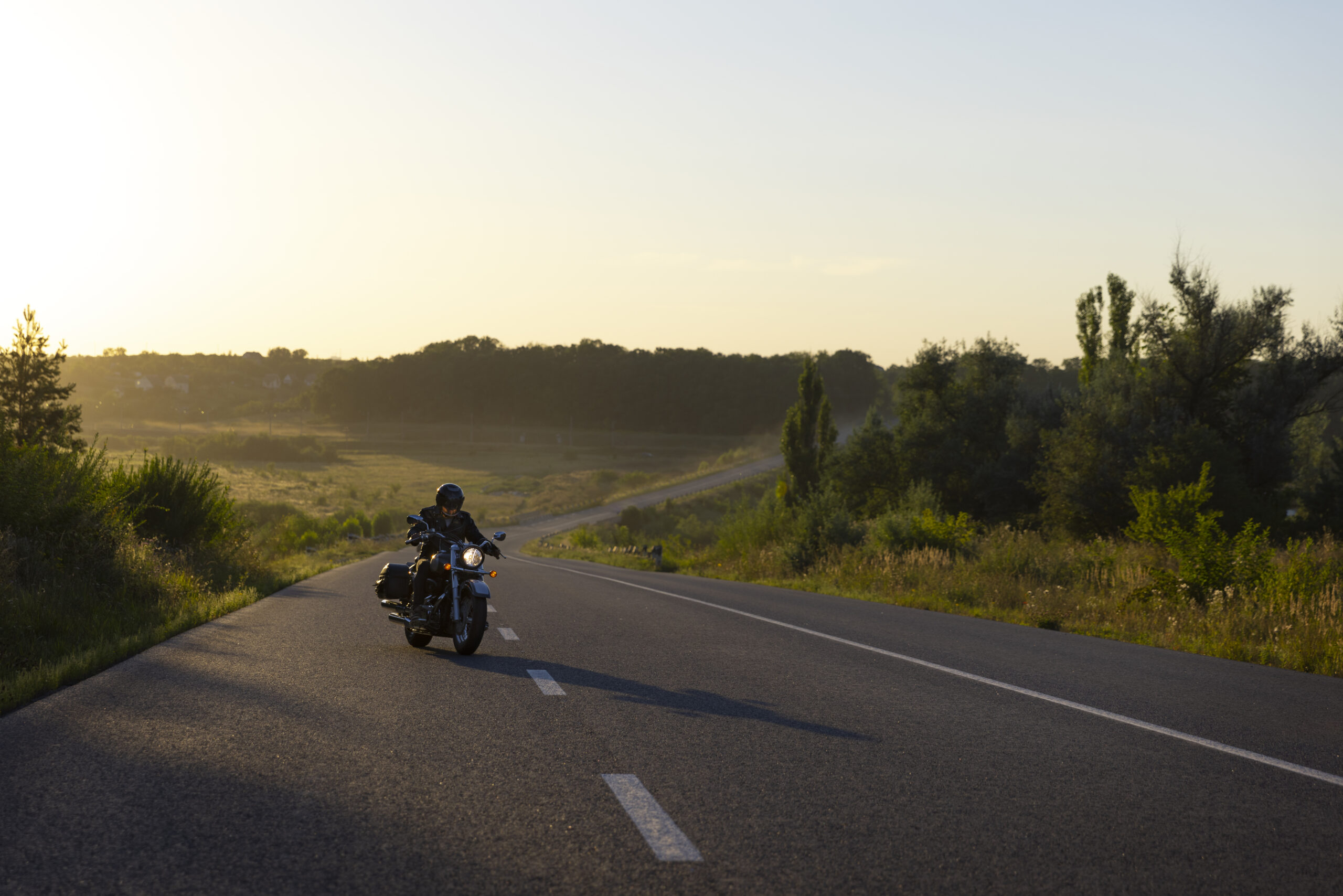How to Plan a Cross-Country Motorcycle Trip

There’s something undeniably magnetic about the idea of a cross-country motorcycle trip. The rumble of the engine beneath you, the endless stretch of open road ahead, and the promise of adventure around every bend—it’s the ultimate escape for riders craving freedom and discovery. But while spontaneity is part of the thrill, a successful cross-country motorcycle trip hinges on meticulous planning. Without it, you might find yourself stranded in the middle of nowhere with a flat tire, no cell service, and a dwindling supply of snacks.
In this guide, we’ll walk you through everything you need to know to plan a cross-country motorcycle trip that balances adventure with practicality. From choosing the right bike to packing like a pro, we’ve got you covered. Let’s hit the road!
1. Choosing the Right Motorcycle for a Cross-Country Trip
Not all motorcycles are built for the demands of a cross-country motorcycle trip. A bike that’s perfect for weekend joyrides might leave you sore and frustrated after days on the highway. Here’s what to consider:
Comfort Over Speed
While sport bikes are thrilling, their aggressive riding posture can lead to fatigue on long hauls. Opt for touring bikes, cruisers, or adventure motorcycles designed for comfort. Models like the Honda Gold Wing, Harley-Davidson Road King, or BMW R 1250 GS offer ergonomic seats, wind protection, and storage options.
Reliability
Your bike must withstand thousands of miles without hiccups. Research models known for durability and easy maintenance. Check online forums or talk to seasoned riders about their go-to bikes for cross-country trips.
Weight and Handling
Heavier bikes provide stability on highways but can be cumbersome on winding roads or gravel paths. If your route includes off-road sections, an adventure bike with a balanced weight distribution is ideal.
Storage Capacity
Panniers, tank bags, and tail packs are essential for carrying gear. Ensure your bike can accommodate luggage without affecting balance.
Pro Tip: Rent a bike for a weekend trip to test its comfort and handling before committing to a cross-country motorcycle trip.
2. Essential Gear and Packing List
Packing for a cross-country motorcycle trip is an art. You need to balance necessity with space constraints. Here’s a breakdown of must-haves:
Riding Gear
- Helmet: Full-face for maximum protection.
- Jacket and Pants: Armored, weatherproof riding gear.
- Gloves: Durable, with grip and ventilation.
- Boots: Ankle support and waterproofing are key.
Tools and Maintenance Kit
- Tire repair kit and portable air compressor
- Multi-tool, wrench set, and chain lubricant
- Spare fuses, bulbs, and clutch/brake cables
Clothing
- Layerable outfits (moisture-wicking base layers, insulating mid-layers)
- Rain gear (packable jacket and pants)
- Casual clothes for off-bike time (keep it minimal!)
Navigation and Tech
- GPS device or smartphone mount (download offline maps)
- Power bank and waterproof phone case
- Action camera to document the journey
Camping Gear (Optional)
- Lightweight tent, sleeping bag, and portable stove
- Collapsible water container and energy snacks
Pro Tip: Use compression sacks to save space and organize gear by category (e.g., tools, clothes, toiletries).
3. Planning Your Route: Tips for Mapping the Journey
A cross-country motorcycle trip isn’t just about getting from Point A to Point B—it’s about the experiences along the way. Here’s how to craft a route that blends efficiency with exploration:
Research Scenic Byways
Roads like the Pacific Coast Highway, Blue Ridge Parkway, or Route 66 are iconic for a reason. Use apps like Rever or Calimoto to find rider-approved routes with twists, turns, and breathtaking views.
Balance Mileage and Flexibility
Aim for 250–400 miles per day, depending on your stamina. Factor in stops for fuel, meals, and photos. Avoid rigid schedules; leave room for detours to quirky roadside attractions or national parks.
Check Road Conditions
Construction zones, seasonal closures, or gravel roads can derail your plans. Check state DOT websites or apps like Waze for real-time updates.
Identify Fuel Stops
In remote areas, gas stations may be sparse. Use GasBuddy to locate stations and never let your tank drop below half.
Pro Tip: Share your itinerary with a trusted friend or family member. Include overnight stops and check in regularly for safety.
4. Budgeting for Your Cross-Country Motorcycle Adventure
A cross-country motorcycle trip can be as affordable or luxurious as you make it. Break down costs into categories:
Fixed Costs
- Bike maintenance (oil change, tire replacement)
- Gear upgrades (if needed)
- Travel insurance (covering medical emergencies and bike repairs)
Variable Costs
- Fuel: Estimate mileage and gas prices using FuelEconomy.gov.
- Food: Budget for groceries and occasional diners.
- Lodging: Campgrounds (10–10–30/night) vs. motels (60–60–120/night).
- Emergency fund: At least $500 for unexpected repairs.
Pro Tip: Cook meals at campsites to save money and add a fun, rustic element to your trip.
5. Safety First: Preparing for Emergencies
Even the best-planned cross-country motorcycle trip can face challenges. Stay ready with these precautions:
Pre-Trip Maintenance
- Inspect tires (pressure and tread depth).
- Test brakes, lights, and fluids (oil, coolant, brake fluid).
- Tighten bolts and lubricate the chain.
Emergency Kit
- First-aid supplies (bandages, pain relievers, antiseptic)
- Emergency blanket and flashlight
- Copies of ID, insurance, and bike registration
Learn Basic Repairs
Know how to fix a flat tire, jump-start the battery, or adjust the chain. YouTube tutorials are a goldmine for DIY skills.
Pro Tip: Enroll in a motorcycle safety course to refresh your riding skills and learn accident-avoidance techniques.
6. Navigating Weather and Road Conditions
Weather can make or break your cross-country motorcycle trip. Prepare for everything:
Check Forecasts
Apps like Weather Underground provide hour-by-hour updates. Avoid riding in extreme heat, thunderstorms, or icy conditions.
Layer Up
Pack thermal liners for cold mornings and ventilated gear for scorching afternoons. Waterproof layers are non-negotiable.
Adjust Riding Style
Reduce speed on wet roads, and be cautious of gravel or sand in corners.
7. Accommodation Options on the Road
Where you sleep impacts your energy and budget:
Camping
- Pros: Affordable, immersive, and scenic.
- Cons: Requires carrying gear and weather dependence.
Motels/Hotels
- Pros: Comfort, security, and Wi-Fi.
- Cons: Higher cost.
Motorcycle-Friendly Lodging
Websites like MotorcycleRoads.com list biker-friendly spots with garage parking and repair tools.
Pro Tip: Use apps like Hipcamp for unique camping experiences on private land.
8. Documenting Your Cross-Country Motorcycle Trip
Memories fade, but photos and journals last forever:
Use a Action Camera
Mount a GoPro to your helmet or handlebars to capture scenic rides.
Keep a Travel Journal
Jot down daily highlights, people you meet, and lessons learned.
Share on Social Media
Create a hashtag for your trip and update followers with stunning shots.
9. Final Checklist Before Hitting the Road
- Bike tuned and tires checked
- Gear packed and secured
- Route saved offline
- Emergency contacts programmed
- Snacks and water stocked
10. Conclusion: Embracing the Journey
A cross-country motorcycle trip is more than a vacation—it’s a test of resilience, a lesson in simplicity, and a gateway to unforgettable stories. While planning is crucial, don’t forget to savor the unplanned moments: the sunsets you stumble upon, the strangers who become friends, and the quiet satisfaction of conquering a mountain pass.
So, rev your engine, trust your prep, and let the road guide you. Your cross-country motorcycle trip awaits!
Keyword-Rich Anchor Text for SEO:
- “cross-country motorcycle trip”
- “plan a cross-country motorcycle adventure”
- “long-distance motorcycle travel tips”
- “best bikes for cross-country touring”
By weaving practical advice with inspirational insights, this guide ensures you’re ready to tackle the open road with confidence. Safe travels! 🏍️



